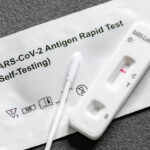Colorado’s Work to Prevent Substance Misuse and Suicides
Substance Misuse Prevention
In 2012, when the full scope of the opioid epidemic begun to become apparent, Colorado officials looked to the Colorado Department of Public Health and Environment (CDPHE) to make sense of the issue.
CDPHE synthesized, streamlined and provided important data to understand the problem and convened the important stakeholders and government divisions—across many disciplines.
Initially, CDPHE operated as an integrator by identifying best practice strategies, generating surveillance reports, and facilitating a series of roundtables focused on different aspects of the issue, from prescribing to dispensing to public awareness to treatment. State agencies used the information from these important convenings to create the Colorado Plan to Reduce Prescription Drug Abuse.
To better monitor progress, state-level leadership created the Colorado Consortium for Prescription Drug Abuse Prevention (Consortium), which provides a statewide, interuniversity/interagency framework designed to facilitate collaboration and serves as the strategic lead for implementing the Plan with active participation from the Governor’s Office and various state agencies.
The Consortium is comprised of nine work groups: Data and Research, the Prescription Drug Monitoring Program (PDMP), Provider Education, Public Awareness, Treatment, Safe Disposal, Naloxone, Heroin Response, and Friends and Affected Family Members. Each work group is co-chaired by a state agency and a university representative. As a whole, the Consortium comprises over 300 local, state and federal members. The Consortium’s structure helps facilitate collaboration between state agencies and university partners, making it possible to easily apply for, receive and leverage funding.
For their part, CDPHE focuses a significant amount of attention on primary prevention, specifically prescriber education and making the state’s PDMP easier to use and better integrated into practice. In Colorado, the PDMP is located in the Department of Regulatory Agencies, which handles professional licensing. During the 2014 legislative session, Colorado legislators passed a bill that aligned Colorado’s PDMP with best practice strategies including allowing: delegated access, unsolicited reports, mandated enrollment, and access by out-of-state pharmacists. This legislation also gave CDPHE access to PDMP data as a public health surveillance tool.
With the data in hand and important partners via the Consortium, CDPHE is using funds from the Centers for Disease Control and Prevention to implement and evaluate several pilot projects aimed at improving use of and access to the PDMP, including: integrating the PDMP with the state’s two health information exchanges; connecting electronic health records and the PDMP at eight outpatient clinics; and linking the PDMP to a software application that will allow improved access to the PDMP and better assess provider adherence to prescribing guidelines.
In addition to work on the PDMP, the Consortium encouraged multiple sectors to advocate for the purchase of naloxone—which the Attorney General decided to fund as a pilot in the 16 counties with the highest overdose rates. In conjunction, another member of the Consortium developed an app to track reversals from using naloxone. CDPHE is conducting an evaluation of the project. But, after just 2 months of data collection, there were nearly 150 reported overdose reversals. As the data continues to be collected, the results should make the case that there is a positive return on investment and that law enforcement is willing to use it.
Suicide Prevention
In July 2012, the Office of Suicide Prevention at CDPHE, Cactus Marketing Communications and the Carson J Spencer Foundation partnered to launch www.ManTherapy.org. The website aims to reach working-age men, who account for the highest number of suicide deaths in Colorado annually.
The three goals of Man Therapy are: 1) to change the way men think and talk about suicide and mental health; 2) to provide men (and their loved ones) with tools to empower them to take control of their overall wellness; and, 3) long-term, to reduce the number and rate of suicide deaths among men. Man Therapy removes traditional mental health language from the conversation and uses humor to help men feel welcome and at ease while visiting the site. The website provides information on depression and suicide, substance use, anger and anxiety, and includes statewide resources specific to finding support and services related to each issue.
In 2015, the Office of Suicide Prevention and the Commission identified Zero Suicide as a priority to better align, integrate and emphasize suicide prevention in Colorado’s health systems. In 2016, Colorado became the first state to pass legislation encouraging healthcare organizations and systems to adopt the Zero Suicide framework, which works to train primary healthcare staff to provide better treatment to individuals who might be contemplating suicide.
Additionally, the Office of Suicide Prevention partnered with Children’s Hospital Colorado, the Colorado School of Public Health, and the Harvard Injury Control Research Center to develop the Emergency Department Counseling on Access to Lethal Means (ED-CALM), which teaches emergency department providers how to educate parents/guardians of suicidal youth about the techniques and importance of restricting access to lethal means in the home.
Going Upstream
CDPHE has a number of efforts dedicated to upstream approaches to preventing youth substance misuse, violence and suicide. For example, CDPHE is currently funding 48 Colorado communities to implement Communities That Care, an evidence-based public health framework that encourages communities to take part in looking at their data, identify evidence-based strategies to address community problems, and implement those strategies to address those issues. The experience uncovered the connections between substance misuse and suicide rates and shown that efforts to prevent substance use work well on preventing suicides and violence.
To help youth even more, CDPHE implemented the Sources of Strength program, a school-based youth initiative focused on redefining school level social norms that has been shown to build positive feelings of connectedness between youth and their peers and communities.
In the program, youth advisors are carefully handpicked from different segments from the school to create leaders from all the peer groups. Those leaders are then educated on suicide prevention basics and are tasked with coming up with positive campaigns that are upbeat and engaging. Because they are peers, the activities are better positioned to get a wider population involved in activities—and research shows that kids involved in activities who are connected to their community are much less likely to commit suicide.
In addition to preventing suicides, building these protective factors extends to preventing sexual violence prevention, bullying and other dangerous and/or risky behaviors. Through the pilot programs, Colorado has begun to see reductions in sexual violence and bullying. CDPHE is currently partnering with researchers at the University of Florida and the University of Rochester to do a rigorous evaluation of Sources of Strength at 24 Colorado high schools to measure the impact the program has on preventing the perpetration of sexual violence, bullying and suicide.

